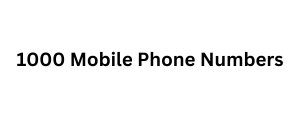Lead generation is part art, part science. Every good marketer or salesperson develops a certain instinct for how to get leads from cold to hot. But no matter how good you are at your job, if you want to reel in the best catch, it always helps to have a pool of potentials at the ready.
What is lead generation?
Leads are people or organizations that have shown interest in your product. Lead generation is the process of making that awareness and interest happen through channels such as websites and social media. Messaging on these channels ideally drives new zealand whatsapp number data potential customers to reach out, or prepares the ground for a salesperson to reach out to them.
There are many types of business lead generation, depending on the channel used to connect with the target audience:
- Marketing lead generation attracts people through a marketing asset (website, content, etc.) combined with a capture method such as a lead generation form that encourages them to leave their contact details.
- Sales lead generation involves somebody contacting the sales department as a way to discover more about a product and maybe listen to a sales pitch. A sales-qualified lead shows a stronger intent signal than a marketing-qualified lead, so they each require different approaches for nurturing.
- Product lead generation is relevant only for product types that are offered in a trial, as is common with B2B SaaS. Leads from this source are companies that have taken advantage of a trial version (free or with limited features) and are now interested in a paid version.
- Service lead generation is similar to product lead generation in that the lead is a user of your product. For service leads, the sale involves a feature upgrade for a company that already uses a paid version.
What is the role of lead generation?
Many buyers pass through the typical flow: cold, warm, and hot. They start off knowing a bit about your product and with the right treatment, end up purchasing it. The goal of lead generation is to gather as many quality leads as possible at each of these stages and move them up a notch.
For example:
- A cold lead might become warm through an effective social media campaign that teaches them more about the value of your product.
- A warm lead could become hot through the evolution of the web an immediate response to their inquiry in the form of a Speed to Lead effort by the sales team.
- A hot lead may become a buyer with an effective approach to a “sales bake-off” that shows your product’s competitive value.
Why is lead generation so hard?
To understand the tough reality of lead generation, just look at cold calling as an example. When a salesperson gets a cold lead, the chance of conversion is about 2%. With stats like that in their minds, it’s no wonder that fear of rejection aero leads contributes to this already challenging initiative.
Fortunately, there are things one can do to optimize this process and improve your odds:
Training and leadership
There are many tips and tricks that boost the success rates of sales teams and how they use leads. Salespeople should become experts in these techniques, and managers should work with the team to refine their approach.
Coordination between marketing and sales
Marketing plays an important role in lead generation, from handing off good lead lists to developing attractive content. When the two departments aren’t on the same page, problems are born. Like when the sales team can’t deliver on marketing material that overpromises about what the product and company can do.
Proper tools and processes
A common cause for a lost lead is a problem with qualification. Obviously, when a salesperson gets a lead that is not suitable, there is next to no chance of a conversion. It is expected that most leads will not end up in a sale, but a particularly low success rate shows.


Pingback: In the past year | 1000 mobile phone numbers